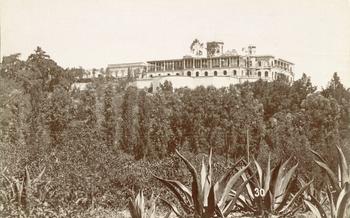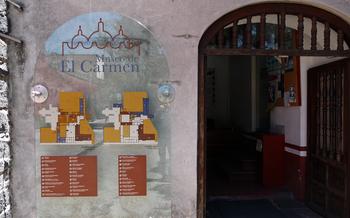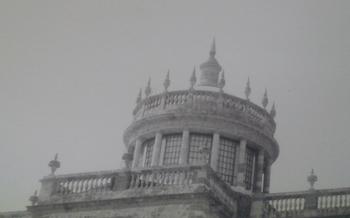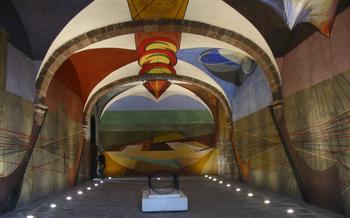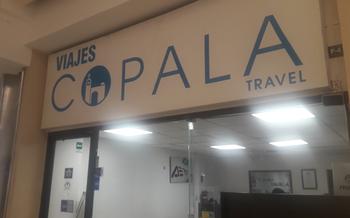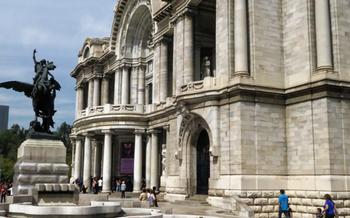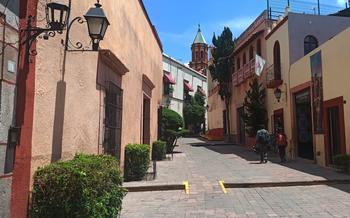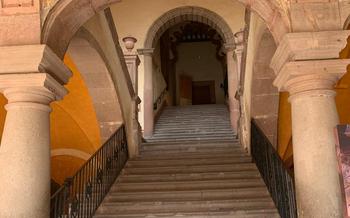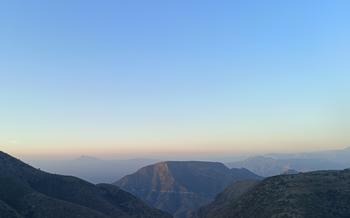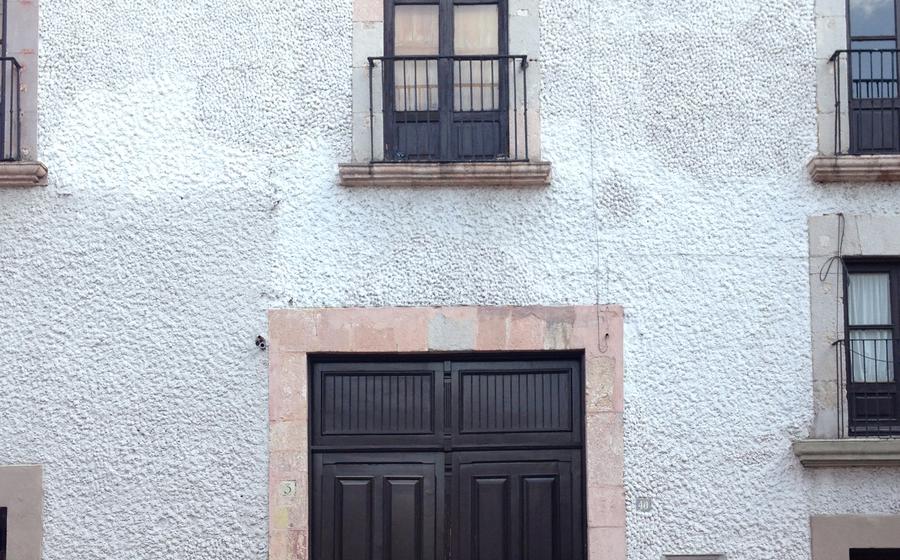
Casa de Cultura de Queretaro
- Exhibitions and Events
- Educational Programs
- Library and Research Center
- Architecture and Design
- Location and Accessibility
- Hours of Operation and Admission Fees
- Guided Tours and Workshops
- Accessibility for Visitors with Disabilities
- Safety and Security Measures
- Photography and Videography Policies
- Food and Beverage Options
- Insider Tip
Exhibitions and Events
The Casa de Cultura de Queretaro is a vibrant hub for artistic and cultural expression, hosting a diverse range of exhibitions and events throughout the year. These exhibitions showcase the works of local, national, and international artists, spanning various mediums including painting, sculpture, photography, and mixed media. The Casa de Cultura also organizes regular events such as concerts, theater performances, film screenings, and literary readings, providing a platform for local talent and fostering a dynamic cultural scene in Queretaro.
Exhibitions at the Casa de Cultura are typically held for a duration of one to two months, allowing visitors ample time to explore and appreciate the featured artworks. Notable past exhibitions have included retrospectives of renowned Mexican artists such as José María Velasco and Frida Kahlo, as well as contemporary exhibitions showcasing the latest trends in contemporary art. Visitors can look forward to upcoming exhibitions that promise to showcase innovative and thought-provoking works by emerging and established artists.
Educational Programs
The Casa de Cultura de Queretaro is not just a repository of cultural treasures but also a vibrant hub for learning and artistic exploration. It offers a diverse range of educational programs designed to engage people of all ages and interests.
One of the highlights of the Casa de Cultura's educational offerings is the series of workshops and classes conducted by renowned artists, scholars, and cultural practitioners. These workshops cover a wide spectrum of disciplines, including painting, sculpture, photography, music, dance, and theater. Participants can learn new skills, hone their existing talents, and immerse themselves in the creative process under the guidance of experienced professionals.
The Casa de Cultura also organizes seminars, lectures, and panel discussions on various cultural topics. These events feature guest speakers who share their insights on art history, literature, philosophy, and contemporary cultural issues. Attendees have the opportunity to engage in thought-provoking discussions, ask questions, and expand their knowledge of different cultural domains.
Moreover, the Casa de Cultura recognizes the importance of arts education for children and young adults. It offers specialized programs tailored to their unique needs and interests. These programs include art classes, storytelling sessions, and interactive workshops that foster creativity, imagination, and cultural awareness among the younger generation.
The Casa de Cultura's educational programs are not only a means of acquiring knowledge and skills but also a way to foster community engagement and cultural dialogue. By providing a platform for learning, creativity, and exchange, the Casa de Cultura contributes to the cultural enrichment and development of Queretaro.
Library and Research Center
The Casa de Cultura also boasts an impressive library and research center, a treasure trove of knowledge and resources for scholars, students, and history enthusiasts alike. Its extensive collection includes rare books, manuscripts, and documents that shed light on Queretaro's rich cultural heritage. Visitors can delve into the history of the region, explore its artistic traditions, and gain insights into the lives of its people through the diverse materials available.
The library's collection is meticulously organized and cataloged, making it easy for researchers to find the information they need. Whether you're interested in local folklore, pre-Hispanic civilizations, or contemporary art, the library's resources are sure to provide valuable insights.
In addition to its vast collection, the library also offers a range of services to support researchers and visitors. Librarians are on hand to assist with research inquiries, and there are dedicated study spaces available for those who need a quiet place to work. The library also hosts regular events, such as book readings, lectures, and workshops, which provide opportunities for visitors to engage with experts and fellow enthusiasts.
Architecture and Design
The Casa de Cultura de Queretaro stands as a testament to the city's rich architectural heritage. Constructed in the late 18th century, the building originally served as a convent for the Capuchin nuns. Its design reflects the transition from Baroque to Neoclassical styles prevalent during that period. The facade of the Casa de Cultura features a simple but elegant design, with a large central doorway flanked by two arched windows and topped by a triangular pediment. The interior of the building showcases a combination of Baroque and Neoclassical elements, including vaulted ceilings, ornate moldings, and delicate frescoes.
One of the most striking architectural features of the Casa de Cultura is its central courtyard. Surrounded by arcaded galleries on three sides, the courtyard provides a tranquil oasis amidst the bustling city. The arcades are supported by slender columns, creating a sense of lightness and spaciousness. The courtyard is often used for outdoor events and exhibitions, adding to the vibrant atmosphere of the Casa de Cultura.
Location and Accessibility
The Casa de Cultura de Queretaro is strategically situated in the historic center of Queretaro City, at the intersection of short walk away, and several taxi stands are located nearby. For those arriving by car, limited street parking is available in the surrounding area.
The Casa de Cultura is wheelchair accessible, with ramps leading to the main entrance and elevators providing access to all floors. Designated parking spaces for visitors with disabilities are also available. Visitors with special needs are encouraged to contact the Casa de Cultura in advance to inquire about any additional assistance or accommodations that may be required. The friendly and helpful staff is always ready to ensure that everyone has a comfortable and enjoyable experience.
Hours of Operation and Admission Fees
The Casa de Cultura de Queretaro is open to the public from Tuesday to Sunday, with specific hours varying depending on the season. During the summer months (June to August), the Casa de Cultura is open from 10:00 AM to 6:00 PM, while during the rest of the year, it operates from 10:00 AM to 5:00 PM. Visitors are advised to check the official website or contact the Casa de Cultura directly for any updates or changes to the operating hours.
Admission to the Casa de Cultura is free of charge, allowing visitors to explore the exhibitions, attend events, and access the library and research center without any financial barriers. This commitment to accessibility ensures that everyone has the opportunity to engage with the cultural heritage and artistic treasures housed within the Casa de Cultura.
To enhance the visitor experience, the Casa de Cultura offers guided tours in Spanish and English upon request. These tours provide in-depth insights into the history, architecture, and collections of the institution, allowing visitors to gain a deeper understanding and appreciation for the cultural significance of the Casa de Cultura.
Guided Tours and Workshops
Visitors to the Casa de Cultura have the opportunity to deepen their understanding and appreciation of the cultural heritage of Queretaro through guided tours and workshops. These tours are conducted by knowledgeable and passionate guides who provide insights into the history, significance, and stories behind the exhibits and collections. Whether you're an art enthusiast, a history buff, or simply someone eager to learn more about the local culture, these tours offer a unique and interactive experience.
The Casa de Cultura offers a variety of guided tours tailored to different interests and age groups. General tours provide an overview of the museum's highlights, while thematic tours focus on specific aspects such as Mexican art, historical artifacts, or contemporary exhibitions. For those interested in a more immersive experience, workshops are available that allow participants to engage with the creative process and create their own artworks inspired by the museum's collection.
To book a guided tour or inquire about workshops, visitors can contact the Casa de Cultura directly or check their website for schedules and availability. It's advisable to reserve your spot in advance, especially for popular tours or workshops, to avoid disappointment.
Participating in a guided tour or workshop at the Casa de Cultura is an excellent way to gain a deeper appreciation for the diverse cultural expressions of Queretaro. Whether you're a first-time visitor or a returning enthusiast, these experiences offer a unique opportunity to connect with the vibrant cultural heritage of the city.
Accessibility for Visitors with Disabilities
The Casa de Cultura de Queretaro is committed to providing an inclusive and accessible environment for all visitors, regardless of their abilities or disabilities. The building features wheelchair-accessible ramps, elevators, and designated parking spaces to ensure easy access for visitors with mobility challenges. Additionally, the Casa de Cultura provides trained staff who are always ready to assist visitors with disabilities, offering guidance, assistance with exhibits, and any other support they may need to fully enjoy their visit.
In one heartwarming incident, a visually impaired visitor expressed his gratitude for the Casa de Cultura's accessibility features. He had always been passionate about art but had faced challenges in experiencing it due to his vision impairment. During his visit to the Casa de Cultura, he was able to touch and feel selected sculptures, allowing him to appreciate the artworks in a way he had never experienced before. The staff's assistance and the availability of tactile exhibits made his visit truly memorable and inspiring.
The Casa de Cultura's commitment to accessibility extends beyond physical barriers. The museum also offers sign language interpretation for guided tours and workshops, ensuring that deaf and hard of hearing visitors can fully participate in educational and cultural programs. This inclusive approach creates a welcoming environment where everyone can engage with and appreciate the cultural treasures of Queretaro.
Safety and Security Measures
The Casa de Cultura de Queretaro takes the safety and security of its visitors very seriously. Several measures are in place to ensure that everyone can enjoy their visit without worry. Security guards patrol the premises regularly, and a sophisticated surveillance system monitors the building and grounds. Visitors are advised to remain vigilant and report any suspicious activity to a staff member immediately. It is also recommended to keep personal belongings close at hand and avoid leaving valuables unattended.
The Casa de Cultura is located in a safe neighborhood, and there have been no reports of major incidents or crimes within the vicinity. However, visitors should exercise caution when exploring the surrounding area, especially at night. It is advisable to stick to well-lit streets and avoid walking alone.
Photography and Videography Policies
Photography and videography enthusiasts are welcome to capture the beauty of the Casa de Cultura through their lenses.
However, to ensure the preservation of the artwork and artifacts and the comfort of other visitors, certain guidelines must be followed. Flash photography is strictly prohibited to prevent damage to sensitive pieces. Tripods and monopods are generally not allowed inside the exhibition spaces, but exceptions may be granted upon request.
For professional photographers or videographers who wish to use the Casa de Cultura as a backdrop for their work, prior permission must be obtained from the administration. This allows the Casa de Cultura to manage the impact on other visitors and ensure that the integrity of the exhibitions is maintained.
By adhering to these guidelines, visitors can help preserve the Casa de Cultura's treasures while also capturing their own unique memories of this remarkable institution.
Food and Beverage Options
The Casa de Cultura de Queretaro offers a delightful culinary experience within its premises. Visitors can indulge in a variety of snacks and refreshments at the on-site cafe, which serves a selection of light meals, pastries, and beverages. The cafe's cozy ambiance provides a perfect setting to relax and recharge while enjoying delicious treats.
For a more substantial dining experience, visitors can explore the surrounding area, which boasts a diverse range of restaurants and cafes catering to different tastes and budgets. Traditional Queretaro cuisine is a must-try, with local restaurants offering mouthwatering dishes such as enchiladas queretanas, gorditas, and pozole.
For those seeking a quick and convenient meal, vending machines are conveniently located within the Casa de Cultura, providing a variety of snacks and drinks to satisfy hunger pangs.
Whether you prefer a leisurely cafe experience, a traditional culinary adventure, or a quick bite on the go, the Casa de Cultura de Queretaro has something to offer every visitor.
Insider Tip
As you wander through the Casa de Cultura's many rooms and galleries, take a moment to appreciate the intricate details hidden within the architecture. Look for the beautiful stained-glass windows that bathe the interior in colorful light, each telling a story from Queretaro's rich history. Discover the hidden courtyard, a tranquil oasis adorned with vibrant murals that bring the city's culture to life. The Casa de Cultura is a treasure trove of artistic surprises, waiting to be uncovered by curious visitors like yourself.
